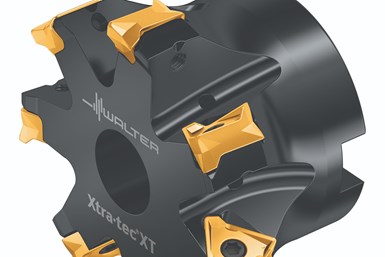Walter M5137 Xtra-tec XT Cutter Reduces Finishing Operations
Walter’s M5137 Xtra-tec XT shoulder milling cutter features 90-degree approach angles, which it says reduces the need for additional finishing operations.
Share






The M5137 Xtra-tec XT shoulder milling cutter from Walter has six indexes per insert, approach angles of exactly 90 degrees, positive geometry and two pitches for different applications. The company says this cutter’s exact 90-degree lead angle reduces the likelihood of needing additional finishing operations. ​Its fully sintered, triangular, double-sided indexable inserts improve process reliability and cost efficiency, while the insert design features easy cutting geometry.
A Tiger-tec coating and six cutting edges per indexable insert further reduce the Walter M5137 Xtra-tec XT’s process costs, while also simplifying tool selection and lowering cutting material and unit costs.
Walter says the milling cutter is universally compatible with steel, stainless steels, cast iron and other difficult-to-machine materials. The company recommends it for face, shoulder, ramping, pocket and circular interpolation milling operations in the energy and mold and die industries. The M5137 has a diameter of 2.0-4.0” (50-100 mm), a maximum depth of cut of 0.315” (8 mm) and a shell mill mount interface.
Related Content
-
Orthopedic Event Discusses Manufacturing Strategies
At the seminar, representatives from multiple companies discussed strategies for making orthopedic devices accurately and efficiently.
-
Lean Approach to Automated Machine Tending Delivers Quicker Paths to Success
Almost any shop can automate at least some of its production, even in low-volume, high-mix applications. The key to getting started is finding the simplest solutions that fit your requirements. It helps to work with an automation partner that understands your needs.
-
How to Mitigate Chatter to Boost Machining Rates
There are usually better solutions to chatter than just reducing the feed rate. Through vibration analysis, the chatter problem can be solved, enabling much higher metal removal rates, better quality and longer tool life.













